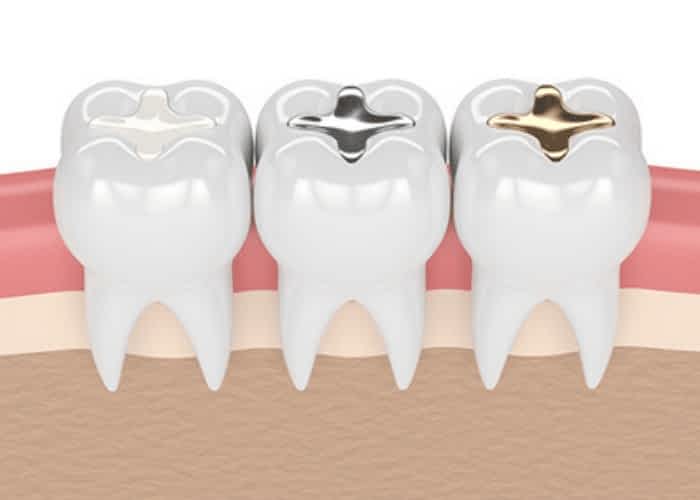
Think you might need a filling?
Ever been curious about dental fillings? Do you know what they are or why they’re used? If so, you’re in the right place!
There are many misconceptions about fillings amongst patients, especially from those of the ‘Baby Boomer’ generation. Sadly, patients of this era may feel great apprehension about having fillings, due to their own bad experiences back in the 60’s, 70’s and 80’s. Poor materials, painful procedures and the dreaded sound of the drill have all contributed to a feeling of trepidation when the mere suggestion of a filling is mentioned.
Thankfully, fillings and dentistry overall has advanced greatly since then. To satisfy your curiosity and hopefully put any concerns to rest, we are answering some of the most common questions about what is one of the most common treatments in dentistry.
1. What is a dental filling?
A dental filling is both a product and a treatment that is used to restore a tooth when a cavity has developed, to stop minor to moderate tooth decay from worsening.
Tooth decay occurs when bacteria from food particles get trapped in a person’s tooth. The bacteria produce acids that will slowly eat away at the tooth until a cavity is formed. Luckily for us, fillings exist, as without them we could be in danger of losing the entire tooth structure. The decay could also reach as far as the tooth root, which is even worse.
Effectively, the dental filling treatment will involve cleaning the affected tooth to remove the nasty bacteria and decay and ‘filling’ in any holes that have formed with a suitable filling material (more about this later).
This restores the tooth to its former function and avoids the need for any more invasive treatment in future.
2. How would I know if I need a filling?
If you are up to date with your regular dental check-ups, it’s possible that your dentist or hygienist might know that you need a filling before you even realise it. With a magnified view of the inside of your mouth, small holes can be spotted before they cause you a problem. This is the ideal way of knowing that you need a filling, as if it’s caught at this stage, the treatment will be quick, simple and easy and you won’t have to have suffered the discomfort of more advanced tooth decay.
Alternatively, if it has been a while since you last visited your dentist and you have started noticing a consistent dull pain or sensitivity when eating or drinking hot or cold foods, it could be that the tooth decay has already penetrated the enamel of your teeth and hit the sensitive dentine layer within.
You may start to notice a rough surface that indicates where decay has attacked the surface of the tooth. Your tongue can often detect the cavity that is starting to form as it will feel very different to the normal contours of your teeth.
3. What types of fillings are there?
Often, when people think of fillings the first thing that springs to mind is the silver-coloured metal blocks nestled into the molars at the back of the mouth.
The reality is that there are many different types of materials and colours available for fillings. Here are the most common types of fillings that are typically used in the UK:
‘Silver’ amalgam fillings
These are the option usually offered on the NHS, since they are the cheapest option available but are not the most aesthetically pleasing. There is some controversy around their use due to their mercury content and toxicity.
White ‘composite’ fillings
This is a tooth-coloured resin, which once placed are almost undetectable in the mouth amongst other natural teeth. The material is not only used for fillings. It is also great for making cosmetic corrections to the shape and size of the teeth, without any safety concerns.
Dr. Azad Eyrumlu of Banning Dental Group reports that ‘while in the past, white fillings used to be weaker than metal fillings, the new generation of composite material are very compatible with the strength of natural teeth.
This means that composite, or white, fillings, are in no way more fragile than metal fillings.’
Ceramic ‘porcelain’ fillings
Also known as ‘inlays’ or ‘onlays’ this is a high-quality, durable option that can be used alone or as a cover for an amalgam filling. They are more suitable for cases of more severe damage or decay but will be more expensive than a composite filling, as they are custom made in a laboratory rather than moulded in chair.
Gold fillings
These are less popular these days and are typically chosen as a matter of personal preference with less concern for time or budget. Like porcelain inlays, they need to be custom made using expensive materials but are incredibly strong and long-lasting.
Glass ionomers
This is a minimal prep filling, which can closely match the natural colour of your teeth. The material is composed of an acrylic and glass-based substance, which is bonded to the tooth with little to no preparation. This makes treatment fast and non-invasive, but they may not be as strong or long-lasting as other options.
4. Is having a dental filling painful?
Aside from the small pinch of the injection, it is unlikely that you will experience any pain or discomfort whilst having a filling. There are so many options for painless anaesthetics these days, that even the injection is nothing to worry about and your mouth will be comfortably numb for the duration of your treatment.
In some cases of minor decay, no aesthetic or preparation is required at all as your dentist will only be treating the superficial top layer of the tooth.
5. How will my tooth feel after having a filling?
This will really depend on which type of filling you have. You tooth may feel a little unusual, as the presence of the filling will take a few days to get used to. There shouldn’t be any discomfort following treatment and you should feel relieved that the pain or sensitivity that you may have sufffered previously, has finally stopped bothering you.
In the case of a composite filling you will be able to eat, chew and drink as normal, at least once your anaesthetic has worn off. Metal fillings can take a little long to set, so you may need to avoid certain foods or drinks for a short period after treatment.
Either way, your dentist will advise of any specific aftercare actions you need to follow or anything to look out for once your treatment is complete.
6. What can I do to avoid having more fillings?
Despite being a very routine treatment, we are sure you don’t want to spend unnecessary time in the dental chair if you can possibly avoid it. Therefore, prevention is always better than cure to avoid returning time and time again to have teeth filled and fixed.
If your teeth have already succumbed to tooth decay once, there is just cause to assume that it could happen again, unless your oral hygiene or diet improve.
This is a matter of going back to basics. Brushing and flossing correctly twice per day. Avoiding sugary food and drinks and making smarter more healthy food choices. For more tips on how your nutrition can help to avoid tooth problems, check this out.
7. How much do fillings cost?
For more details on the price of our fillings and all our other dental treatments, take a look at our Fee guide.
We are the home of affordable private dentistry and are taking on new patients including their first examination for just £25.
Why not book in and check that there are no nasty surprises on the horizon?








